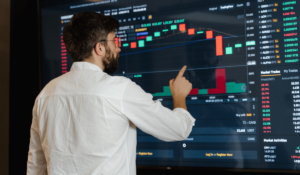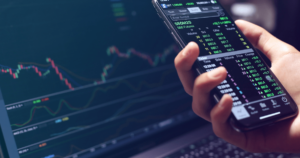Introduction
The financial markets are influenced by various factors, including investor sentiment and emotions. One of the popular tools used to gauge market sentiment is the Fear and Greed Index. In this article, we will delve deeper into the Fear and Greed Index, its calculation methodology, significance, and applications. We will also address commonly asked questions about this index to provide a comprehensive understanding of its role in measuring market sentiment.
What is the Fear and Greed Index?
The Fear and Greed Index, introduced by CNN Money, is a metric that quantifies investor sentiment across the financial market. It is measured on a scale ranging from zero (Extreme Fear) to 100 (Extreme Greed). The index aims to provide insights into the overall market sentiment, assisting investors in making informed investment decisions.
Calculation Methodology
The Fear and Greed Index is calculated based on seven key indicators, each representing a unique aspect of market behavior. These indicators include:
- Stock Price Strength: This indicator compares the number of stocks reaching a 52-week high versus those at a 52-week low. It reflects fear when more equities experience lows, and greed when more stocks reach highs.
- Market Volatility: Higher volatility is associated with fear, as investors tend to close positions and open new ones during uncertain market conditions. Lower volatility, on the other hand, indicates greed, as investors hold onto assets they expect to increase in value.
- Junk Bond Demand: This indicator demonstrates market greed. When investors prefer safer positions over risky ones offered by junk bonds, it reflects anxiety and fear about an approaching bear market.
- Market Momentum: The Fear and Greed Index calculates the market’s current volume and momentum by using 30-day and 90-day averages. High volume and momentum are considered negative measures, contributing to the index’s output.
- Dominance: Dominance refers to the percentage of total cryptocurrency market capitalization accounted for by Bitcoin. An increase in Bitcoin’s dominance may indicate investor skepticism towards altcoins.
- Surveys: Weekly surveys assess people’s opinions on the markets, providing qualitative data on market momentum and volatility.
- Call Options: Call options represent a bullish position, indicating an anticipated price increase. A higher number of traders taking this position signifies market greed. Conversely, put options reflect a bearish stance, with traders anticipating price declines.
Understanding the Fear and Greed Index:
The Fear and Greed Index serves as a tool to measure and quantify sentimental impulses driving market movements. By understanding and controlling these emotions, investors can make more successful trading decisions. However, it is important to note that the Fear and Greed Index should not be the sole factor considered when making investment decisions. It is recommended to combine it with other fundamental and technical analyses for a comprehensive assessment.
Interpreting the Fear and Greed Index:
The Fear and Greed Index categorizes sentiment into four ranges:
- Extreme Fear (0-24, orange): This range indicates that the market is in a state of extreme fear.
- Fear (25-49, yellow): The market is experiencing fear, although prices may not be at their lowest.
- Greed (50-74, light green): Market greed is prevalent, with many investors buying securities and driving up prices.
- Extreme Greed (75-100, green): This range signifies extreme greed in the market, often indicating an imminent pullback.
Applications of the Fear and Greed Index:
Short-Term Trading: While market timing is generally discouraged, the Fear and Greed Index can assist in determining optimal entry and exit points for short-term trades.
Long-Term Investing: The Fear and Greed Index can help identify overvalued securities during periods of extreme greed and potential buying opportunities during periods of fear.
Asset Allocation: Investors can adjust their asset allocation based on the Fear and Greed Index, increasing cash or defensive positions during bearish trends and allocating more to securities during bullish trends.
Conclusion:
The Fear and Greed Index is a valuable tool for measuring market sentiment and providing insights into investor behavior. By understanding the index’s calculation methodology and interpreting its ranges, investors can make more informed investment decisions. However, it is crucial to supplement the index with other forms of analysis and not solely rely on it. Keep in mind that market sentiment isjust one aspect of the complex financial landscape.
Frequently Asked Questions:
Q1: Can the Fear and Greed Index accurately predict market movements?
A1: The Fear and Greed Index is not a crystal ball for predicting market movements. It provides a snapshot of market sentiment but should be used in conjunction with other analytical tools for a comprehensive assessment.
Q2: How often is the Fear and Greed Index calculated?
A2: The Fear and Greed Index is calculated daily, weekly, monthly, and annually, providing updated insights into market sentiment across different timeframes.
Q3: Are there alternative tools to track market sentiment?
A3: Yes, there are other tools and indicators available to track market sentiment, such as the VIX (Volatility Index), put/call ratio, and various sentiment surveys conducted by financial institutions.
Q4: Can the Fear and Greed Index be used for all types of financial markets?
A4: While the Fear and Greed Index was initially developed for the stock market, it can also be applied to other financial markets, including cryptocurrencies. However, it is important to consider the specific characteristics and dynamics of each market when interpreting the index’s readings.
Q5: How reliable is the Fear and Greed Index?
A5: The Fear and Greed Index is a widely recognized and popular sentiment indicator. While it provides valuable insights, it should not be the sole basis for investment decisions. It is recommended to combine it with other forms of analysis and consider the broader market context.
Q6: Can the Fear and Greed Index be used for day trading?
A6: The Fear and Greed Index can be used as a supplementary tool for day trading, helping traders identify potential overbought or oversold conditions. However, it is essential to incorporate other technical indicators and trading strategies for a well-rounded approach.
Q7: Is the Fear and Greed Index applicable to individual stocks?
A7: The Fear and Greed Index is primarily designed to measure overall market sentiment.
Remember, successful investing requires a comprehensive approach, considering multiple factors such as company fundamentals, economic indicators, and risk tolerance, in addition to market sentiment.








